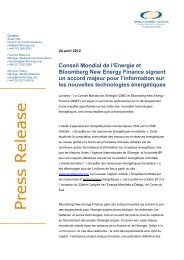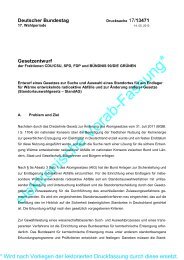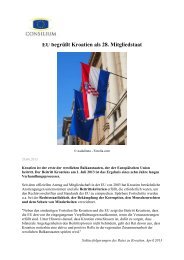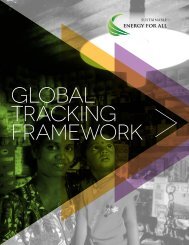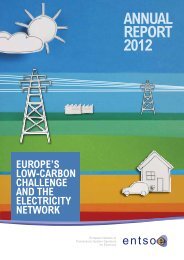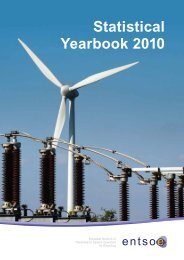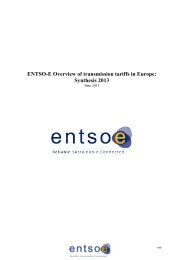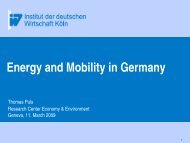Performance of Generating Plant - World Energy Council
Performance of Generating Plant - World Energy Council
Performance of Generating Plant - World Energy Council
You also want an ePaper? Increase the reach of your titles
YUMPU automatically turns print PDFs into web optimized ePapers that Google loves.
6<strong>Performance</strong> <strong>of</strong> <strong>Generating</strong> <strong>Plant</strong>: Managing the Changes Executive Summary <strong>World</strong> <strong>Energy</strong> <strong>Council</strong> 2007Figure 2 Reactor units by regionSource: IAEA-PRISM14012010080604020011301168Reactor units by region10 1928190 4122Europe - W Europe - E Asia - FE Asia - ME&S NorthAmerica1 06 2LatinAmericaAfricaIn operation Long-term shutdown Under constructionimportant part <strong>of</strong> the global energy mix. In 2006nuclear power supplied about 15.2% <strong>of</strong> theworld’s electricity. For over 50 years nuclearpower plants have accumulated 12,500 reactoryears<strong>of</strong> operating experience. The statisticspresented in this report are based on datacollected by the International Atomic <strong>Energy</strong>Agency (IAEA) for its Power Reactor InformationSystem (PRIS). The database system coverstwo kinds <strong>of</strong> data: general and designinformation on power reactors, and performancedata consisting <strong>of</strong> energy production, energyunavailability and outages.General and design information relates to allreactors that are in operation, underconstruction, or shutdown in the world.The PRIS can be used to assess nuclear powerperformance as it provides information on plantutilisation and planned and unplannedunavailability due to internal and externalcauses. Using detailed classification <strong>of</strong> energylosses and a comprehensive outage codingsystem, a set <strong>of</strong> internationally acceptedperformance indicators is calculated using thePRIS performance data. The indicators can beused for benchmarking, internationalcomparison or analysis <strong>of</strong> nuclear poweravailability and reliability from reactor specific,national or worldwide perspectives. Thisanalysis can be utilised in evaluation <strong>of</strong> nuclearpower competitiveness compared with otherpower sources.In October 2007, there were 439 operatingnuclear power plants (NPPs) around the worldtotalling 371.7 GWe <strong>of</strong> installed capacity. Inaddition there were also 5 operational units inlong-term shutdown with a total net capacity 2.8GWe. There also were 31 reactor units with atotal capacity 23.4 GWe under construction.The ten countries with the highest reliance onnuclear power in 2006 were: France, 78.1%;Lithuania, 72.3%, Slovakia, 57.2%, Belgium,54.4%; Sweden, 48.0%, Ukraine, 47.5%;Bulgaria, 43.6%, Armenia, 42.0%, Slovenia40.3% and Republic <strong>of</strong> Korea 38.6%.In North America, where 121 reactors supply19% <strong>of</strong> electricity in the United States and 16%in Canada, the number <strong>of</strong> operating reactors hasincreased in the last three years due to reconnection<strong>of</strong> two long-term shutdown reactorunits in Canada (Bruce-3 in 2004 and Pickering-1 in 2005) and one in USA (Browns Ferry-1 in2007).In Western Europe, with 130 reactors, overallcapacity has declined by 1966 GWe because <strong>of</strong>shutdown <strong>of</strong> 11 ageing reactor units. In Eastern



